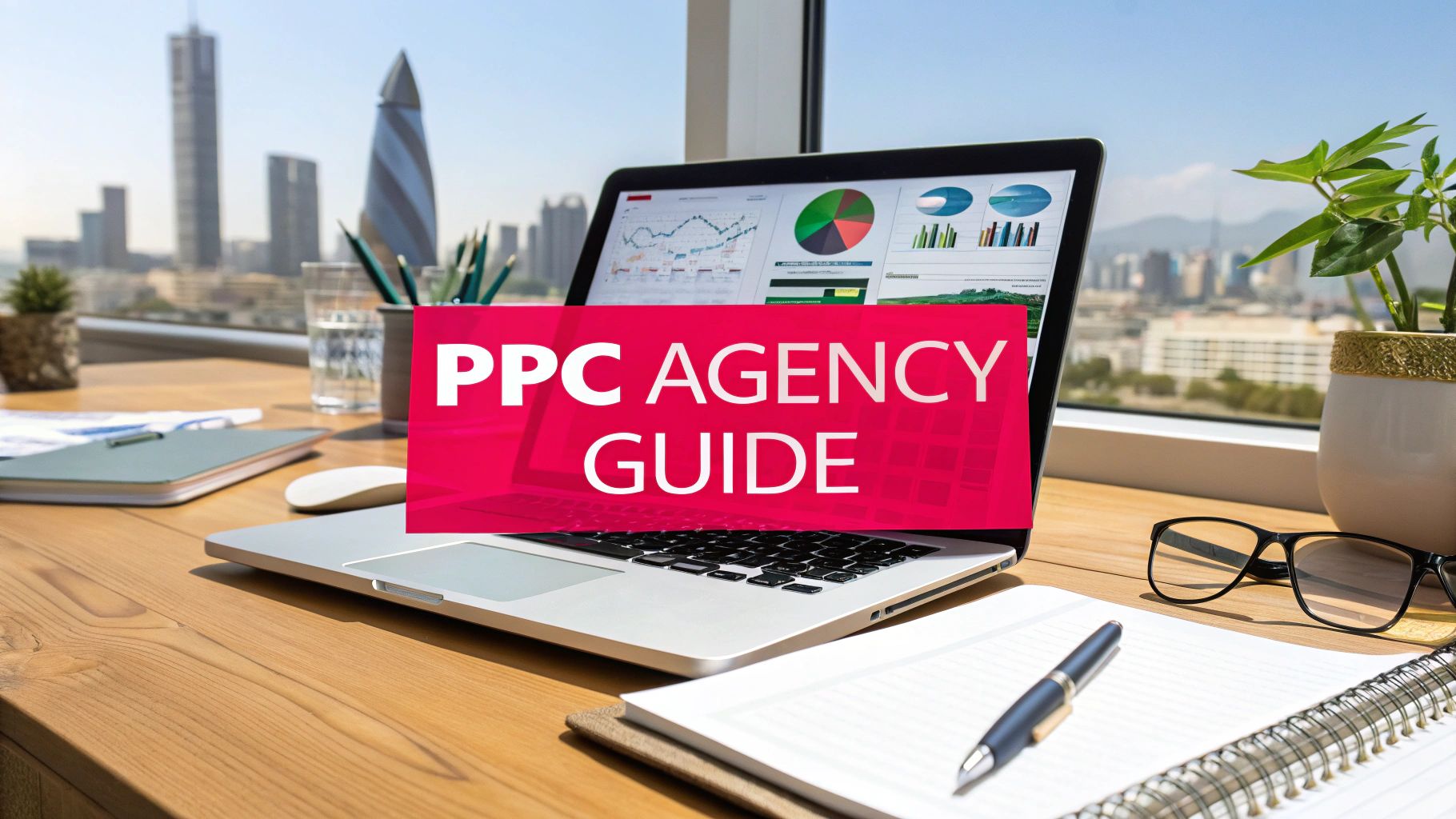A website development company is essentially a team of pros who design, build, and keep websites running for other businesses. They take care of the entire process, from hashing out the initial strategy and creating design mockups to the actual coding, launch, and ongoing support. Their job is to make sure your corner of the internet works well and looks great.
Defining Your Project Before You Hire Anyone
Before you even think about searching for a web development company, you need to get your vision down on paper. Seriously. Walking into a meeting with an agency without a solid plan is like asking an architect to build a house without a blueprint. You'll end up with confusing quotes, mismatched expectations, and a project that's already behind schedule.
Taking the time to define your requirements upfront is the single most important thing you can do to ensure your project is a success. This isn't just about making a feature list; it's about building a strategic foundation for your entire digital presence.
From Vague Idea to Actionable Brief
Your first task is to turn broad business goals into specific website objectives. What are you actually trying to accomplish? Are you looking to generate leads? Sell products directly from the site? Or is it purely an informational hub? Each of these goals requires a completely different strategy.
For example, a local plumbing business needs a website that’s all about local SEO, with a can't-miss contact form and clear service area maps. On the other hand, a national e-commerce brand needs powerful product filtering, rock-solid payment gateways, and a server setup that can handle massive traffic spikes during a holiday sale. Getting this clarity helps you find a company with the right expertise. For a great breakdown of this process, check out the Outsource Web App Development Success Guide.
A well-structured brief is also your best defense against scope creep—that infamous project-killer where "just one more feature" gets added over and over, blowing your budget and timeline to bits. This document becomes your project's north star, guiding every single decision.
A detailed project brief does more than just get you an accurate quote. It forces you to think critically about your business needs, aligning internal stakeholders and creating a unified vision before a single line of code is written.
Core Components of a Strong Project Definition
To build a brief that actually works, you need to cover a few key areas. Start with your target audience. Who are you trying to talk to? A website built for tech-savvy millennials is going to have a totally different vibe and functionality than one designed for retirees.
Next, get specific about the features you need. Go beyond the obvious stuff and think through how people will actually use the site.
- User Authentication: Do customers need to create accounts to see their order history or access a private portal?
- E-commerce Capabilities: Are you planning a full-blown shopping cart, or do you just need a simple way to take payments for a handful of products?
- Content Management: How easy does it need to be for your team to update text, swap out images, or post a blog without calling a developer?
- Third-Party Integrations: Does your website need to talk to your CRM, email marketing platform, or inventory system?
This is exactly where a creative brief becomes so valuable. It’s the formal document that pulls all these details together in one place, acting as the main point of reference for any web development company you talk to. If you’re not sure where to start, looking at a creative brief example like this one can be incredibly helpful: https://grassrootscreativeagency.com/creative-brief-example/
The shift to digital has sparked huge growth in this industry. In the UAE alone, the broader Middle East software market—which includes web development—was valued at around $13.6 billion in 2024 and is expected to rocket to $32 billion by 2025. With so many more agencies to choose from, a detailed brief is more important than ever for finding the perfect partner in a crowded field.
Finding and Vetting Potential Development Partners
With your project brief in hand, the real work begins. Finding the right website development partner isn't a quick Google search; it’s a strategic hunt for a team that truly gets your vision and your industry. The goal here is to sift through the noise and find a partner who can become an extension of your own team.
Your Starting Points: Sourcing Potential Agencies
Forget generic business directories. Your search should start on platforms where quality is curated and proven.
Websites like Clutch, Behance, and even Dribbble are goldmines. They aren't just lists; they are living portfolios filled with client reviews, detailed project breakdowns, and agency specializations. You can filter by industry, budget, and location, which immediately narrows the field to relevant contenders.
But don't stop there. One of the most powerful tools you have is your own professional network. A referral from a trusted colleague who has been through this process is invaluable. It comes with a built-in layer of trust and firsthand experience of the agency's process, communication, and, most importantly, results.
Casting a Wide Net: Build Your Longlist
At this stage, your aim is to gather an initial list of about 10-15 agencies. Don't get bogged down in deep analysis just yet. Think of this as the initial scouting mission.
Here are a few smart places to look:
- Industry Forums and Communities: Check out discussions where businesses like yours are talking about their web projects. Who are they praising?
- Local Business Groups: Your city's chamber of commerce often has a vetted list of local service providers.
- Competitor Deep Dive: Take a look at websites in your niche that you admire. Often, the agency that built the site is credited right in the footer.
This initial exploration gives you a fantastic feel for the market. You'll quickly see which firms are e-commerce powerhouses, which excel at corporate sites, and which have that creative flair your brand might need.
From Longlist to Shortlist: The Vetting Process
Now, it’s time to get serious. The goal is to whittle that longlist down to 3-5 top contenders. This is where your detailed brief becomes your most important tool, acting as a scorecard for evaluating each agency. You need to look past the slick marketing and find real, tangible proof of their capabilities.
Start with their portfolio. Go beyond the pretty homepages and dig into their case studies. Do they have projects that mirror yours in scope, complexity, or industry? An agency with a track record of building successful e-commerce sites for fashion brands is a much safer bet for your new online boutique than a firm that mostly works with law firms.
Next, assess their actual expertise. A great way to do this is to check out their blog or resources section. Are they writing with authority about the technologies they use? An agency that openly shares its knowledge is usually confident in its skills. This also gives you a sneak peek into their communication style—is it clear and helpful, or bogged down in technical jargon? For those operating in the UAE, this guide on choosing a website design company in Abu Dhabi offers a great look at what local, top-tier expertise involves.
Remember, the goal isn't finding the "best" agency in the world, but the right agency for your specific project. A lean, agile team that's perfect for a startup might not have the robust processes a large corporation requires.
This is where the idea of a custom-fit solution really comes into play.

The best partners don't just build websites; they craft digital solutions designed to solve very specific business challenges, just like yours.
A Quick Vetting Framework
To keep your evaluation consistent across all candidates, it helps to use a standardized set of criteria. This table breaks down what you should be looking for and what should make you pause.
Key Vetting Criteria for Shortlisting Agencies
| Vetting Criterion | What to Look For | Red Flags to Watch For |
|---|---|---|
| Relevant Experience | Case studies and portfolio examples in your industry or with similar project scope. | A generic portfolio with no clear specialization or relevant work. |
| Client Reviews | Detailed, authentic reviews on third-party sites like Clutch or G2. | Vague testimonials on their own website; no verifiable reviews elsewhere. |
| Technical Expertise | In-house expertise in the tech stack you need; insightful blog posts or whitepapers. | Over-reliance on outsourcing for core skills; inability to discuss tech details clearly. |
| Communication Style | Prompt, professional, and clear responses to your initial inquiries. | Slow response times, typos in emails, or overly sales-y language. |
| Team & Culture | A clear "About Us" page showing the core team; a culture that seems to align with yours. | No information about their team; a "black box" agency with no visible people. |
Using a simple framework like this ensures you're comparing apples to apples and making a decision based on data, not just a gut feeling.
Spotting the Red Flags Early On
Knowing what to avoid is just as critical as knowing what to look for. Spotting red flags during your vetting can save you from a world of frustration later.
Be cautious of any website development company whose own site is buggy, slow, or looks dated. If they can't maintain their own digital presence, how can you trust them with yours? The same goes for their communication. If they're slow or unprofessional now, it's a preview of what you can expect once a contract is signed.
One of the biggest red flags is a reluctance to provide client references or an overly vague proposal. A confident, transparent firm will be eager for you to speak with their past clients and will ask tons of questions to understand your project before ever talking numbers. By keeping an eye out for these warning signs, you can build a strong, reliable shortlist of partners ready for the next step.
Prioritizing E-commerce and Future Scalability

For a lot of businesses, a website isn't just a digital brochure—it’s the cash register. When your revenue is tied directly to online sales, picking a website development company with serious e-commerce chops isn't just a good idea; it’s a make-or-break business decision.
An inexperienced team can build you something that looks like a store, but it won't work like one. Real e-commerce development is so much more than a product page and a "buy now" button. It’s a complex machine of interlocking systems designed to give your customers a smooth, secure, and reliable shopping experience from start to finish.
This means any partner you consider must have a proven track record with the foundational elements of a successful online store.
Essential E-commerce Functionality
Before you sign any contracts, you need to see proof of their experience with the non-negotiables. A great e-commerce site needs a powerful engine under the hood, not just a flashy paint job.
Dig into their portfolio. You’re looking for specific examples of their ability to build and integrate:
- Secure Payment Gateway Integration: Can they seamlessly connect with multiple providers? Think beyond just Stripe or PayPal; in our region, experience with options like Tabby or Tamara is a huge plus.
- Intuitive Inventory Management: A system that keeps your stock levels updated in real-time is critical. Nothing frustrates a customer faster than trying to buy a product that’s actually out of stock.
- Dynamic Product Catalogs: The best online stores let customers find what they want, fast. This requires smart catalogs with advanced filtering, powerful search, and high-quality product photos and videos.
Getting this right from the beginning is everything. For a deeper dive into what this involves, especially for local market needs, you can read our detailed guide on ecommerce website development in Dubai.
Planning for Growth and Scalability
One of the most expensive mistakes you can make is building a website for the business you have today, not the one you want tomorrow. The site that handles 50 orders a day just fine can completely buckle under the pressure of a viral marketing campaign or a Black Friday rush that brings in thousands of visitors.
Scalability isn't a feature you can bolt on later. It has to be woven into the very fabric of your website's architecture from day one. This is a critical conversation you need to have with any potential website development company.
Your platform must be built to handle your best day, not just your average day. A website crash during a massive sale can cost you more in lost revenue and brand damage than the initial investment in a scalable solution.
This isn't just about handling more traffic. Real scalability means thinking ahead. Do you have plans to sell internationally down the road? If so, your site needs to be built from the ground up to support multiple languages and currencies. Trying to add this to a site not designed for it is a technical nightmare and a huge expense.
Just look at the e-commerce boom in the MENA region. The market is projected to hit $80.3 billion by 2029, fueled by an 11.7% compound annual growth rate. This explosion in growth means the demand for secure, scalable platforms is at an all-time high. It requires developers who understand how to build for local consumers, from responsive design to ironclad cybersecurity. You can find more insights on the MENA e-commerce market on bccresearch.com.
Ultimately, investing in a scalable platform isn't an expense; it's an investment in your company's future. It ensures that as your brand grows, your technology is right there with you, ready for whatever comes next.
Evaluating Proposals and Making Your Final Choice

The proposals are in. After all the research and initial calls, this is where the rubber meets the road. It's incredibly tempting to just scan for the bottom-line number and pick the cheapest one, but I've learned from experience that this is almost always a mistake.
A proposal from a top-tier website development company isn’t just a quote; it's the first real glimpse into how they think, plan, and execute. The lowest bid often means something crucial has been left out, setting you up for unexpected costs and delays later on. Your real task here is to decode what each proposal is truly offering.
Look Beyond the Price Tag
A great proposal should feel like the agency has already started digging into your project. It needs to be detailed, customized to the needs you outlined, and show they genuinely grasp your business goals. If you get a vague, one-page quote, consider it a major red flag.
Here's what I always look for to properly compare apples to apples:
- A Detailed Scope of Work: Does it list everything you asked for? Just as important, does it clearly state what's not included? This kind of clarity is your best defense against scope creep.
- The "Why" Behind the Tech: They shouldn't just list a bunch of technologies. A good partner will explain why they're recommending a specific platform—like WordPress for its content flexibility or Shopify for its robust e-commerce tools.
- A Realistic Project Timeline: A professional timeline is more than just a start and end date. It should break the project into clear phases (discovery, design, development, launch) with specific deliverables at each milestone.
- Who You'll Be Working With: The proposal should introduce the key people who will be bringing your project to life, especially the project manager and lead developer.
As you get closer to a decision, brushing up on contract negotiation strategies can make a huge difference in locking in the best possible terms.
The Critical Role of a Discovery Phase
One of the clearest signs you're dealing with a professional website development company is their insistence on a paid discovery phase. If an agency wants to skip this and jump straight into coding, be wary. This is the foundational work where they really get to know your business.
During discovery, their team conducts stakeholder interviews, maps out user journeys, and produces the technical blueprint for the project. This process ensures everyone is on the same page before the expensive work begins, which drastically cuts down the risk of costly changes down the line.
A paid discovery phase isn't an extra cost; it's an investment in risk mitigation. It ensures the final product is built on a foundation of deep understanding and strategic alignment, not assumptions.
This is where the relationship shifts from a simple vendor-client dynamic to a true partnership. It's the hallmark of a mature team that cares more about a successful outcome than a quick sale.
Breaking Down Timelines and Team Dynamics
The timeline an agency proposes says a lot about their process. If it seems too good to be true, it probably is—they might be cutting corners. On the other hand, an excessively long timeline could signal that they're stretched too thin. Line up the timelines from each proposal to get a feel for what’s realistic.
It’s also crucial to understand the team structure. Will you have a dedicated project manager as your single point of contact? This is usually a sign of a well-organized workflow that will save you a lot of headaches.
Keep in mind that the cost of development is changing. In the UAE, for instance, a talent shortage has driven developer salaries up by over 40% recently. This pressure contributes to a 10-15% annual increase in project costs for many agencies. To stay competitive, many now use a hybrid model, blending their in-house experts with outsourced talent to manage costs without sacrificing quality.
The Final Interviews and Making the Call
Once you've dissected the proposals and narrowed it down to your top two contenders, it’s time for one last meeting. This is your chance to ask tough questions and, just as importantly, see if the chemistry is there.
Come prepared with specific questions pulled from their proposals:
- "You recommended Magento over Shopify for our store. Can you walk me through your reasoning for our specific needs?"
- "I noticed your timeline for user testing is fairly short. Could you explain what that process looks like?"
- "How do you typically handle change requests or new ideas that come up mid-project?"
Listen closely. The right partner will be transparent, confident in their expertise, and genuinely excited to work with you. By focusing on their methodology and the potential for a real partnership, you can confidently pick the company that will deliver true, long-term value.
Getting the Paperwork Sorted and Kicking Things Off
https://www.youtube.com/embed/i1d9HoPdBz0
You’ve found your team. Now it’s time to make it official before the real work begins. This is where a rock-solid contract comes in, and it's easily the most important document you'll sign during this entire process. Think of it less as a legal formality and more as a shared roadmap that keeps everyone on the same page.
This document is where all those conversations, emails, and proposal details become a binding agreement. It’s your safety net, defining exactly what you’re getting, when you’re getting it, and what happens if bumps appear in the road. Rushing this part is a classic mistake that almost always leads to headaches later.
Nailing Down the Terms
A good contract doesn't leave anything up for interpretation. It needs to be crystal clear, covering every angle of your partnership. Vague language is where misunderstandings—and unexpected bills—are born.
Make sure your agreement includes these non-negotiables:
- A Detailed Scope of Work (SOW): This should be a comprehensive list of every single feature, page, and service the company is delivering. Just as important, it should explicitly state what's not included to prevent scope creep.
- Payment Schedule & Milestones: Never agree to a payment structure that isn't tied to real progress. A common setup is 30% to start, 40% spread across key milestones (like design approval or a working beta), and the final 30% when the site goes live.
- Intellectual Property Ownership: This one is critical. The contract must clearly state that upon final payment, you own 100% of the work—the code, the designs, everything.
- Confidentiality: A standard NDA protects any sensitive business info you need to share. It's a simple clause that provides peace of mind for both sides.
Getting these details locked in before anyone writes a line of code is how you avoid the most common client-agency disputes. It builds a framework for accountability from the very start.
The All-Important Kickoff Meeting
Once the ink is dry, it’s time for the kickoff meeting. This is your first official huddle as partners. It's more than just a round of introductions; it’s a strategic session designed to get both teams perfectly aligned and ready to hit the ground running. The whole point is to turn the plan into action.
A great kickoff builds immediate momentum. Everyone should walk away knowing exactly what their role is, how to communicate, and what the first tangible steps are.
The kickoff meeting is where the proposal stops being an idea and becomes a real project with real people and deadlines. It’s your chance to confirm that the A-team you met during the sales process is the A-team you’ll actually be working with.
To get the most out of this meeting, make sure your agenda hits these points:
- Meet the Team: Who’s your day-to-day contact? Who’s the project manager? Who’s the lead developer? Putting faces to names makes collaboration so much smoother.
- Set Communication Rules: How will you stay in touch? A shared Slack channel for quick questions? A standing weekly video call for progress reports? Figure it out now to avoid a messy inbox later.
- Confirm the First Steps: What’s the very first deliverable you should expect to see? Is it initial wireframes? A detailed project plan in Asana? Get clarity on the immediate next steps.
- Revisit the Goals: Do one last alignment check on the key business goals. Make sure everyone from your team and the website development company is aiming for the exact same definition of success.
This first meeting sets the tone for everything that follows. By getting the ground rules and expectations sorted out upfront, you’re building a foundation for a partnership that delivers results, not drama.
Got Questions? Here’s What Everyone Asks Before Hiring a Web Development Partner
Even with a detailed plan in hand, you’re probably wrestling with a few final, practical questions. It’s totally normal. In fact, most businesses I’ve worked with hit this stage and ask the exact same things. Let's clear up these common sticking points so you can move forward with total confidence.
Many of these questions boil down to the partnership model itself. If you're new to working with external teams, it's a good idea to check out a complete guide to understanding outsourcing companies, since that's how many top-tier development partners operate. Getting that context will help you understand the relationship and how things will actually work day-to-day.
How Much Will This Cost, and How Long Will It Take?
Let's get straight to the point: the budget. Everyone wants to know, what is the average cost to build a website with an agency? Honestly, it's all over the map. A clean, simple informational site could start around $5,000. But if you're talking about a custom e-commerce platform with all the bells and whistles—think special integrations and unique features—that number can easily climb past $50,000. Never, ever move forward without a detailed quote that’s based directly on your project brief.
That question almost always leads to the next one: how long does it typically take to build a new website? For a standard marketing or corporate site, plan on 8 to 12 weeks from the official kickoff to launch day. If you’re building something bigger, like a custom web app or a massive e-commerce store, you should realistically expect four to six months, sometimes longer. Any professional website development company will give you a phased timeline in their proposal, so there are no nasty surprises.
The only cost and timeline estimates you can trust are the ones that come after a deep-dive discovery phase. If an agency throws a fixed price at you without digging into your business needs, they're guessing—and those guesses could cost you big time down the road.
Freelancer vs. Agency: Which Is Right for Me?
This is another classic crossroads. Should I hire a freelancer or a website development company? There’s a place for both. For smaller projects with a really tight, well-defined scope, a talented freelancer can be a fantastic, cost-effective choice. They’re usually nimble and can execute straightforward tasks quickly.
But for a complex, mission-critical website? You’ll want the firepower of an agency. They bring a full team to the table: designers, front-end and back-end developers, QA testers, and a project manager to keep everything on track. That integrated structure is your safety net, providing a much broader skill set to handle whatever challenges pop up.
What Happens After We Launch?
This is the question that too many people forget to ask until it’s too late. What happens after my website is launched? A website isn't a "set it and forget it" project. It's a living part of your business that needs regular care to stay secure, functional, and effective.
Look for an agency that offers post-launch support and maintenance plans. These retainers are designed to protect your investment and should cover the essentials:
- Security Updates: Routinely patching the CMS and plugins to fend off vulnerabilities.
- Bug Fixes: Squashing any technical glitches that surface after the site goes live.
- Minor Content Changes: Helping with small updates to text or images when you need an extra hand.
Make sure you get the details on these support options and their costs locked down before you sign anything. It ensures you have a team in your corner, ready to keep your site running perfectly long after the initial build is done.
At Grassroots Creative Agency, we build more than websites; we build strategic digital assets that drive business growth. Learn how our expert development team can bring your vision to life.








